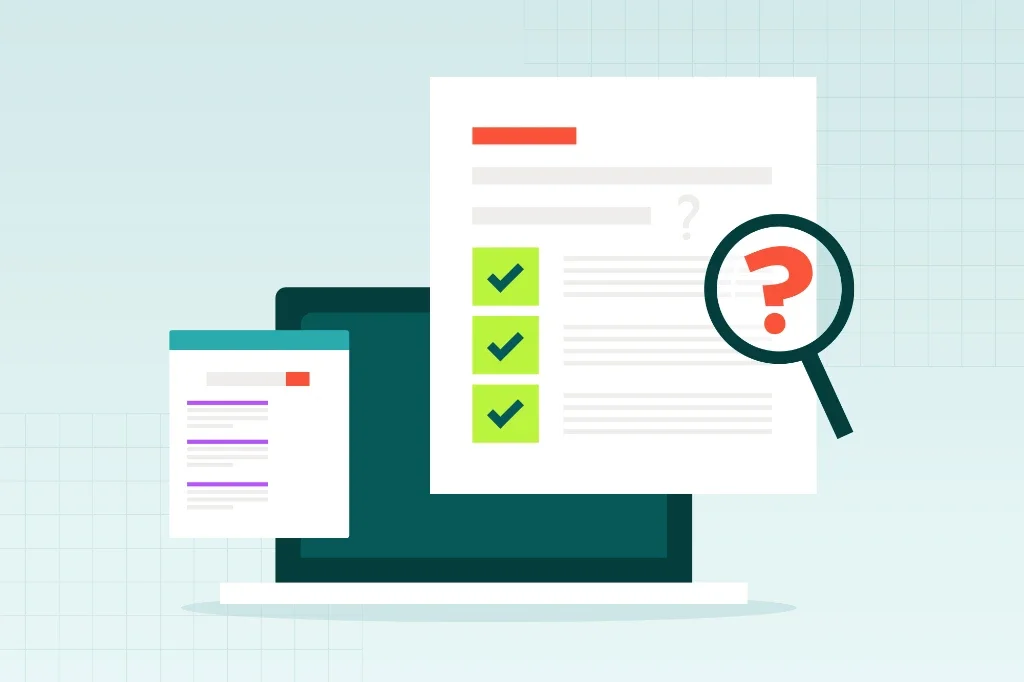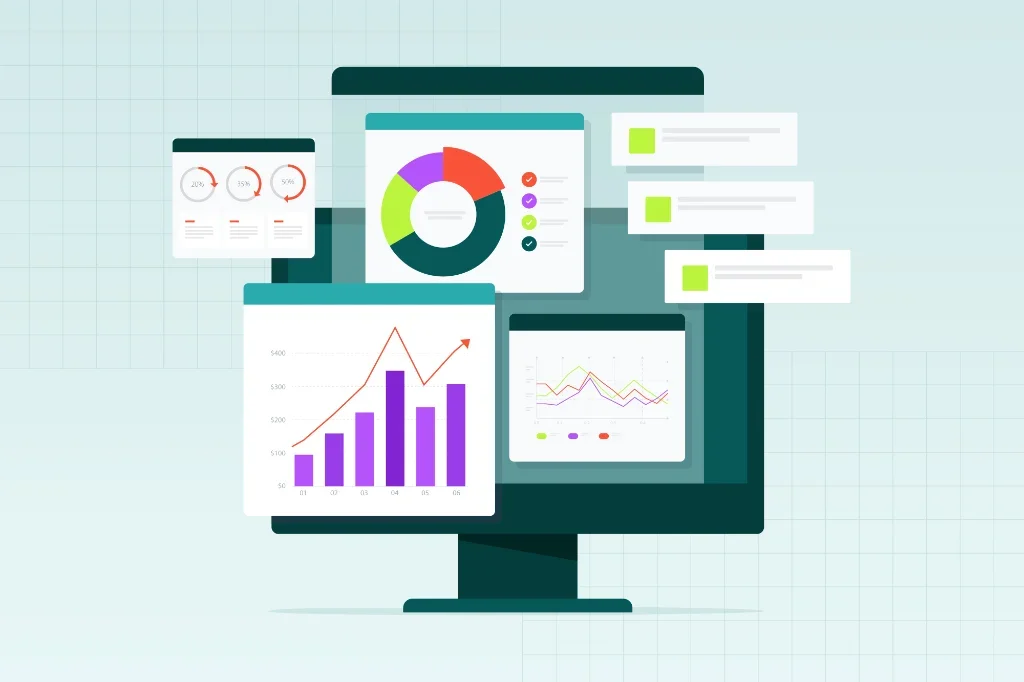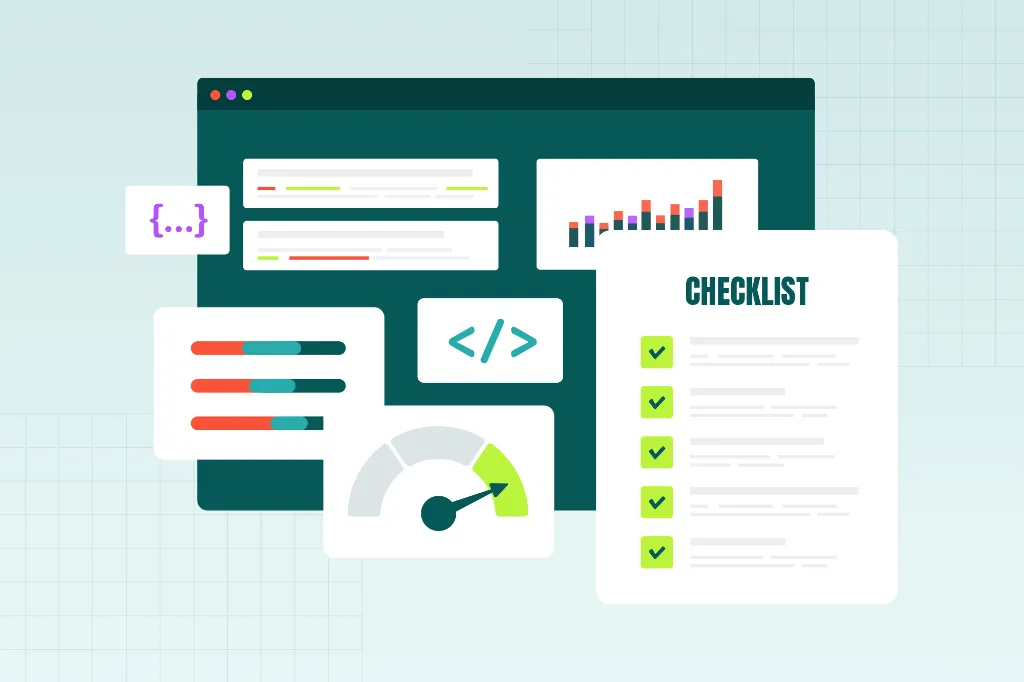We hear it from clients every day: search engine optimization can feel overwhelming. Between algorithm updates, technical requirements, and evolving best practices, it’s easy to get lost in the minutia of this important marketing strategy. That’s exactly why we created this comprehensive FAQ guide. We’ll break down the most important SEO concepts in straightforward terms, so you can understand how search optimization fits into your growth strategy.
What exactly is SEO?
SEO stands for search engine optimization. It is the practice of improving your website’s visibility in search engine results pages (SERPs). In plain English, it’s about making your website more visible on search engines like Google or Bing when people search for products, services, or information you provide.
Think of your website as a shop on a busy street. SEO is like putting up a bright, eye-catching sign and making sure the street map points straight to your door. The better your SEO, the easier it is for customers to find you.
Why does my business need SEO?
The numbers tell the story—over 8.5 billion searches happen on Google daily. More pertinently, most purchasing decisions begin with online research. If your website isn’t visible in search results, you’re missing out on potential customers who are ready to buy.
Here’s what effective SEO delivers:
- Increased visibility: Get discovered by more potential customers
- Quality traffic: Attract visitors who are genuinely interested in your offerings
- Enhanced credibility: High search rankings build trust with your audience
- Sustainable growth: Unlike paid advertising, organic rankings provide ongoing value
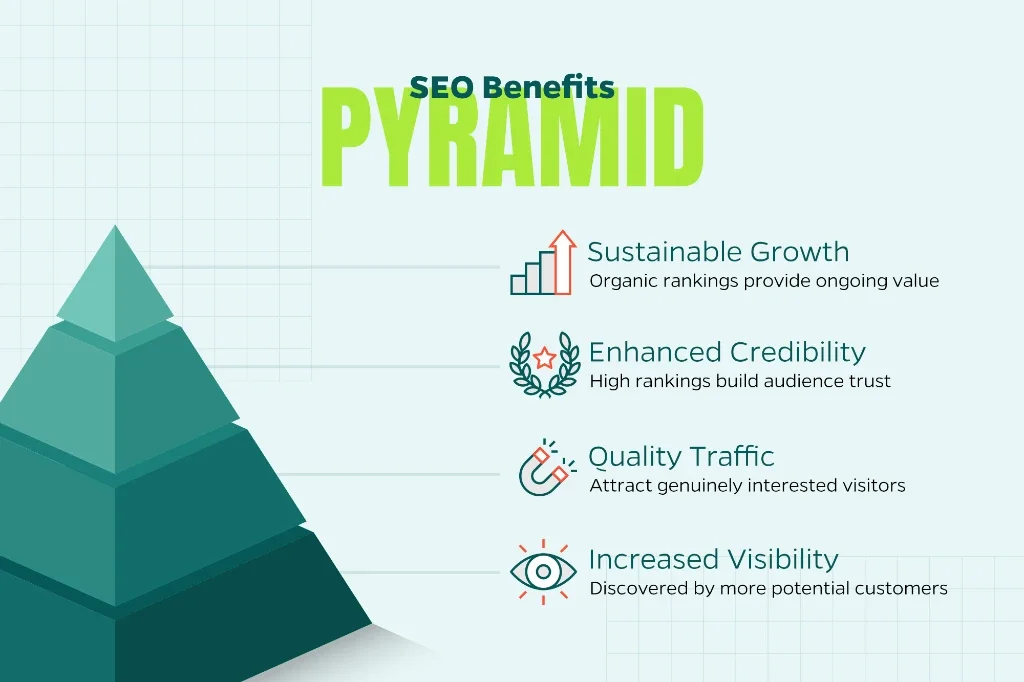
How long does it take for SEO to show results?
This might be the most asked question in digital marketing, and the honest answer is “it depends.” Most businesses see meaningful improvements within 4-12 months, though some competitive industries may take longer.
Several factors influence your timeline:
- Your website’s current authority and technical health
- The competitiveness of your industry
- The consistency and quality of your optimization efforts
- Your local market dynamics
SEO is fundamentally a long-term investment. While it requires patience upfront, the compounding benefits make it one of the most cost-effective marketing channels over time.
What’s the difference between SEO and PPC?
SEO and pay-per-click (PPC) advertising both aim to get you on search engine results pages, but they work differently:
- SEO: Focuses on earning organic (non-paid) rankings through quality content, technical fixes, and authority building. It’s a marathon, not a sprint.
- PPC: Involves paying for ads to appear at the top of search results. It’s fast—traffic starts as soon as your campaign launches—but stops when you stop paying.
SEO Benefits | PPC Benefits |
Builds long-term organic visibility | Delivers immediate visibility and traffic |
Generates ongoing traffic without per-click costs | Offers precise targeting and control |
Establishes authority and trust | Provides quick testing opportunities |
Provides compound returns over time | Generates predictable, scalable results |
The most successful digital marketing strategies combine both approaches—using PPC for immediate results while building SEO for sustained growth.
Can I handle SEO on my own, or should I hire an agency?
Many businesses can perform basic SEO tasks like content creation and simple on-page optimization. However, comprehensive SEO requires expertise across multiple disciplines:
- Technical website optimization and troubleshooting
- Determining whether you are using the best e-commerce platform
- Competitive analysis and market research
- Link building and digital PR strategies
- Performance tracking and reporting
- Algorithm update adaptation
Working with an experienced agency provides access to specialized tools, proven processes, and strategic expertise that can accelerate your results while freeing up your internal resources for core business activities. A good agency will also help you avoid key SEO mistakes that can set you back.
How do I know if my SEO is working?
You’ll know your SEO is paying off by tracking key metrics, or key performance indicators (KPIs):
- Organic traffic growth: More visitors coming from search engines.
- Better keyword rankings: Your site climbing the ranks for relevant terms.
- More leads or sales: Conversions tied to organic search.
- Local visibility: Showing up in “near me” searches or map results.
Tools like Google Analytics and Google Search Console are your friends here. An agency can also translate these numbers into clear reports that show how SEO is boosting your bottom line.
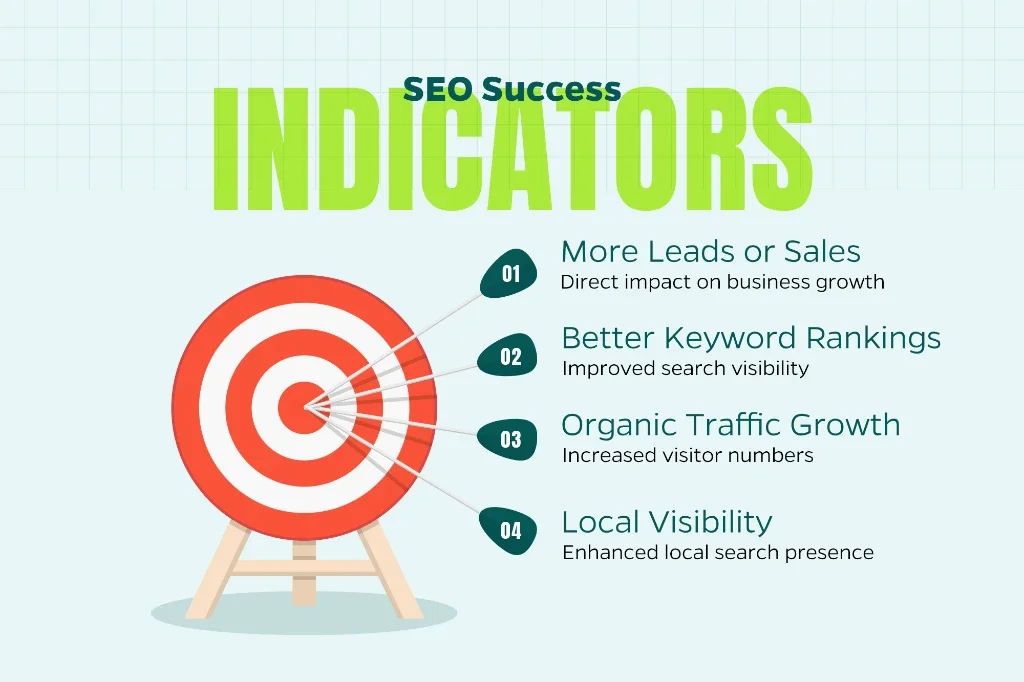
Is SEO a one-time project or ongoing effort?
SEO requires continuous attention and optimization. Search engines regularly update their algorithms, competitors constantly improve their strategies, and user search behaviors evolve over time.
Successful SEO programs include:
- Regular content creation and optimization
- Technical maintenance and improvements
- Ongoing competitive monitoring
- Link building and relationship development
- Performance analysis and strategy refinement
Think of SEO like physical fitness—consistent effort yields the best long-term results.
What’s the difference between on-page and off-page SEO?
These represent two complementary aspects of search optimization:
On-Page SEO encompasses everything within your website:
- Content quality and relevance
- Title tags and meta descriptions
- Header structure and internal linking
- Site speed and mobile responsiveness
- Technical elements and schema markup
Off-Page SEO involves external factors that influence your rankings:
- Backlinks from authoritative websites
- Social media signals and engagement
- Online reviews and reputation management
- Brand mentions across the web
- Local citations and directory listings
Both elements work together to establish your website’s authority and relevance in search engines.
How has keyword strategy evolved in modern SEO?
Keywords remain important, but the approach has become more sophisticated. Instead of focusing solely on exact-match phrases, modern SEO emphasizes:
- What problem is the searcher trying to solve?
- What type of content best serves their needs?
- Where are they in the customer journey?
Semantic Search Optimization:
- Using related terms and synonyms naturally
- Creating comprehensive content that covers topics thoroughly
- Building topical authority through expert content
Long-Tail Opportunity Focus:
- Targeting specific, lower-competition phrases
- Addressing niche questions and problems
- Capturing high-intent commercial searches
Why is content so important for SEO?
Content is the foundation SEO. Without it, there’s nothing for search engines to rank or for users to engage with.
Great content:
- Answers your audience’s questions clearly.
- Uses headings, lists, and simple language for readability.
- Includes relevant keywords naturally.
- Encourages users to act, like contacting you or making a purchase.
In short, content is what turns clicks into customers. - Can use video optimization to improve conversion.
What’s Local SEO, and do I need it?
Local SEO helps your business show up in searches with local intent, like “coffee shop near me” or “best lawyer in Austin.” It’s a must for businesses serving specific areas, like restaurants, retail, or service providers.
Key Local SEO tactics include:
- Optimizing your Google Business Profile.
- Earning positive customer reviews.
- Keeping your name, address, and phone number (NAP) consistent across the web.
- Creating content tied to your location.
If your customers are local, Local SEO is non-negotiable.
Do backlinks still impact search rankings?
Absolutely. Backlinks remain one of the most important elements of a good SEO strategy, serving as “votes of confidence” from other websites. However, the quality and relevance of these links matter far more than quantity.
High-Value Backlinks Come From:
- Industry-relevant, authoritative websites
- Local business associations and chambers of commerce
- Media outlets and industry publications
- Partner organizations and suppliers
- Educational institutions and research organizations
Focus on earning links through valuable content, industry relationships, and genuine expertise rather than pursuing link schemes or low-quality directories.
How does site speed affect SEO?
Site speed is a ranking factor because users hate slow websites, and Google knows it. A fast-loading site improves user experience, reduces bounce rates, and can boost your rankings.
To improve speed:
- Optimize images (compress without losing quality).
- Use a reliable hosting provider.
- Minimize heavy code or plugins.
- Enable browser caching.
Tools like Google’s PageSpeed Insights can pinpoint areas to improve.
What’s the role of mobile optimization in SEO?
More people search on phones than desktops, so Google prioritizes mobile-friendly websites. If your site isn’t easy to navigate on a smartphone, you’re likely losing rankings and customers.
Mobile optimization means:
- Responsive design that adapts to any screen size.
- Fast load times on mobile networks.
- Easy-to-tap buttons and readable text.
Test your site with Google’s Mobile-Friendly Test to see where you stand.
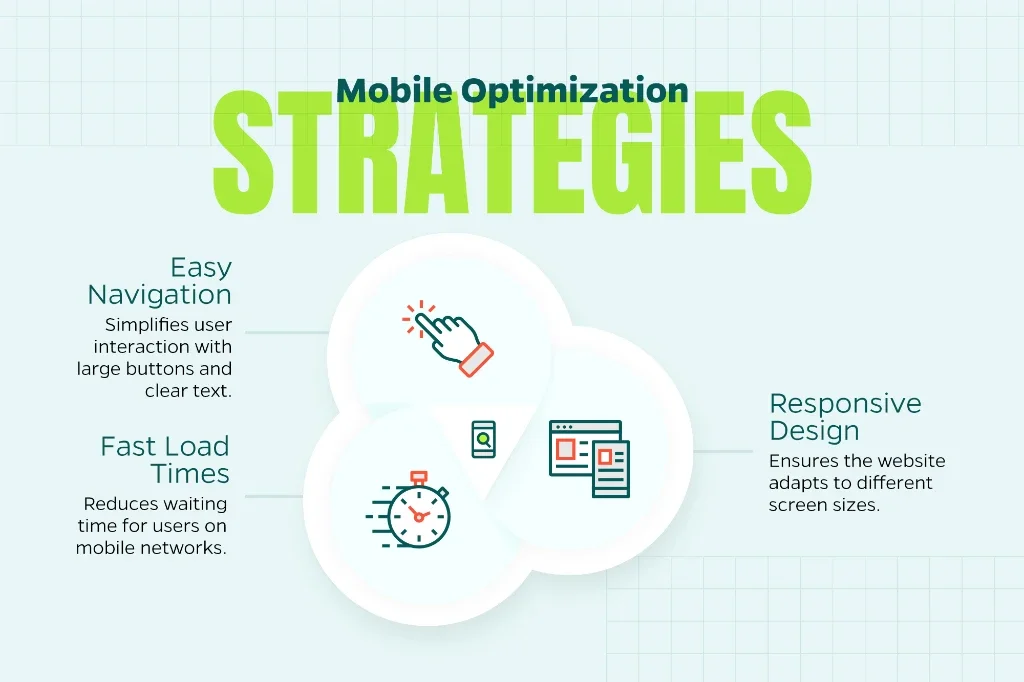
Final Thoughts
SEO might seem daunting, but it’s simply about making your website the best possible match for what your audience’s needs. By nailing the basics and staying consistent, you can drive more traffic, build trust, and grow your business over time.
At Straight North, we’ve helped businesses of all sizes turn SEO into a powerful tool for growth. Ready to cut through the complexity and see real results? We’re here to guide you every step of the way.

